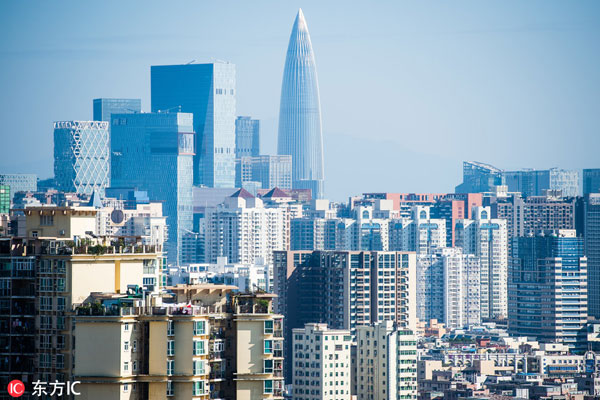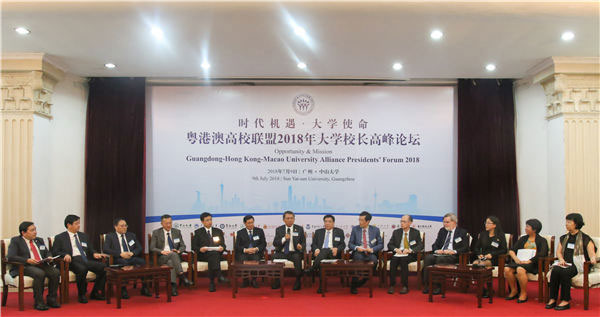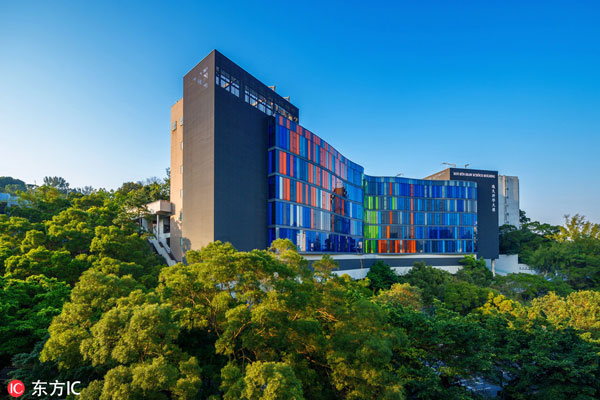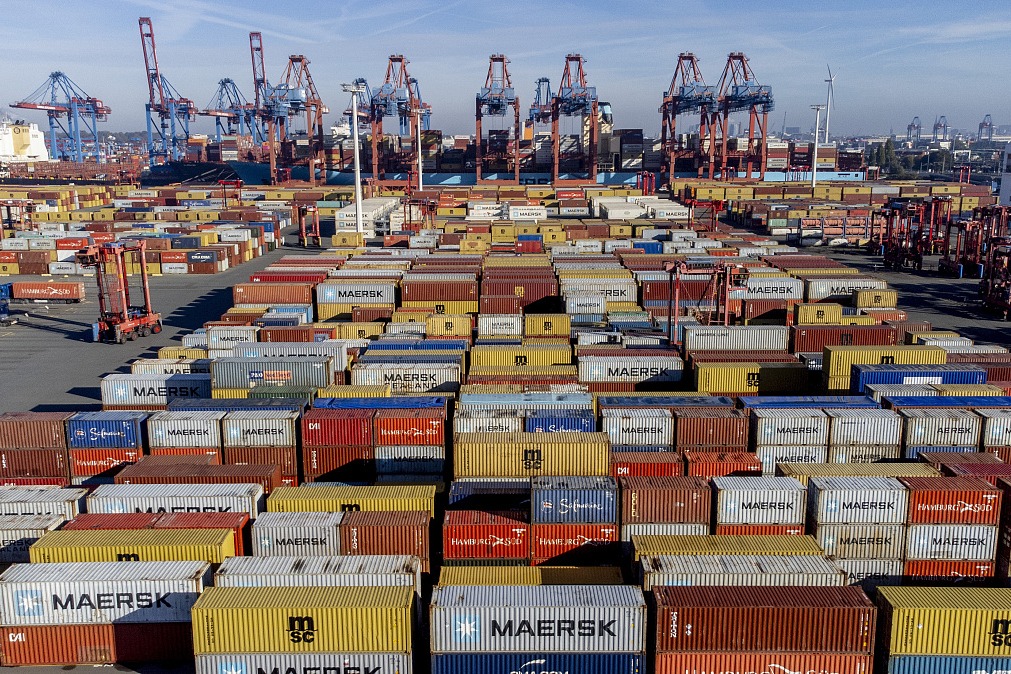Current, future educational co-op in Greater Bay Area

The outline development plan for the Guangdong-Hong Kong-Macao Greater Bay Area, unveiled by Chinese authorities on Feb 18, and included measures to promote educational cooperation among cities in the area.
The Greater Bay Area is composed of nine cities in the Pearl River Delta region – Guangzhou, Shenzhen, Dongguan, Foshan, Zhuhai, Zhaoqing, Zhongshan, Jiangmen and Huizhou in Guangdong province – as well as Hong Kong Special Administrative Region and Macao Special Administrative Region.
Since the 1980s, Guangdong province, Hong Kong and Macao have been developing educational exchanges and cooperation in the development of social economy, culture and education.
In November 2016, 26 universities in the region jointly founded a university alliance to cooperate in students' enrollment, running of schools, scientific research, academic exchanges and other aspects.

Nanshan district in Shenzhen, Guangdong province, is the educational and scientific research center of the city, and also is home to Shenzhen University and Shenzhen High-tech Industrial Park. [Photo/IC]
For the past few years, fruitful achievements have been made, with about 190 undergraduate programs, 78 platforms and five joint laboratories having been set up in the Greater Bay Area.
Cooperative bases, including Nansha Information Technology Park in Guangzhou, ShenZhen-HongKong Institution in Shenzhen established by Peking University and Hong Kong University of Science and Technology (HKUST), and HKUST Fok Ying Tung Research Institute, were also founded.
However, the depth and level of present education exchanges and cooperation between the three places still need to be expanded and improved, according to Wang Ming, deputy director of the National Center for Education Development Research (NCEDR).
Wang said that higher education has an essential function in the development of the Greater Bay Area.
"Colleges and universities, as reservoirs of talents and a high ground for innovative thinking, can offer numerous talents as well as intellectual support to the construction of the Greater Bay Area," said Liu Jin, director of Department of International Cooperation and Exchanges at the Ministry of Education, at the university alliance presidents' forum in July 2018.

The Guangdong-Hong Kong-Macao University Alliance Presidents' Forum is held at Sun Yat-sen University in Guangzhou, the capital city of Guangdong province, July 9, 2018. [Photo/cyol.com]
There are abundant higher education resources in the region, with a total of about 150 universities and colleges. Five Hong Kong universities are in the top 50 universities globally, Macao's tourism and education disciplines rank among the top in the world, and Guangdong has a complete discipline layout and industrial chain. Giving full play to their respective advantages can help to form a complementary, closely linked, and well-coordinated educational cooperation mechanism with effective communication in the region.
Vocational education is also an important part of the Greater Bay Area's education system, and a significant way to promote the industrial upgrading of the region and cultivate advanced manufacturing talents, according to Wang.
The number of higher vocational schools in the nine cities in the Pearl River Delta region accounts for about 81 percent of Guangdong province's total, providing the province with hundreds of thousands of applied talents annually.
Hong Kong has an advantage in management and professional accreditation; Macao is powerful in tourism and education; Guangdong does better in the scale of higher vocational education and employment. Actively advancing the three places' cooperation in higher vocational education is conductive to the realization of vocational education resource sharing, collaborative innovation, and the achievements of mutual benefits.

The Chinese University of Hong Kong is renowned as one of Asia's most beautiful university campuses. [Photo/IC]
As well, exchanges and cooperation in basic education among major cities in the area will be strengthened, Wang said. Middle and primary schools and kindergartens should be encouraged to become sister schools.
Guangdong is one of the earliest provinces on the Chinese mainland to implement the "sister schools" project. In 2005, Guangdong signed "sister school" agreements with Hong Kong and Macao. By the end of 2018, there were 850 pairs of sister schools in the region, which is beneficial to communication between schools, teachers and students.
According to Meng Jiu'er, a research associate of NCEDR, innovation is the core of boosting the educational cooperation at a deeper level among cities in the Greater Bay Area.
Meng encourages colleges and universities in the Greater Bay Area to jointly found a recognition committee to carry out cooperation in mutual recognition of credits in particular courses. A special fund could also be set up for major innovation projects to boost cooperation in scientific research among cities in the region.
Besides, Meng also supports the establishment of an industry-university-research innovation alliance.
MOST POPULAR
- 1 Things to know about China Intl Consumer Products Expo 2024
- 2 China tops FDI confidence index of emerging markets
- 3 China specifies steps to improve payment services in tourist attractions
- 4 Low-altitude economy set to take off
- 5 China's immigration service platform receives over 10m calls from home, abroad
Editors' Picks
 Infographic:
A look at China's economy in Q1 of 2024
Infographic:
A look at China's economy in Q1 of 2024
 Infographic:
China to remove foreign ownership restrictions in value-added telecom services in pilot areas
Infographic:
China to remove foreign ownership restrictions in value-added telecom services in pilot areas
 Infographic:
2023 Sino-German investment and trade in numbers
Infographic:
2023 Sino-German investment and trade in numbers
 Infographic:
China-Germany relations in graphic
Infographic:
China-Germany relations in graphic



